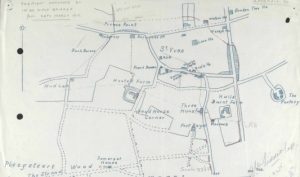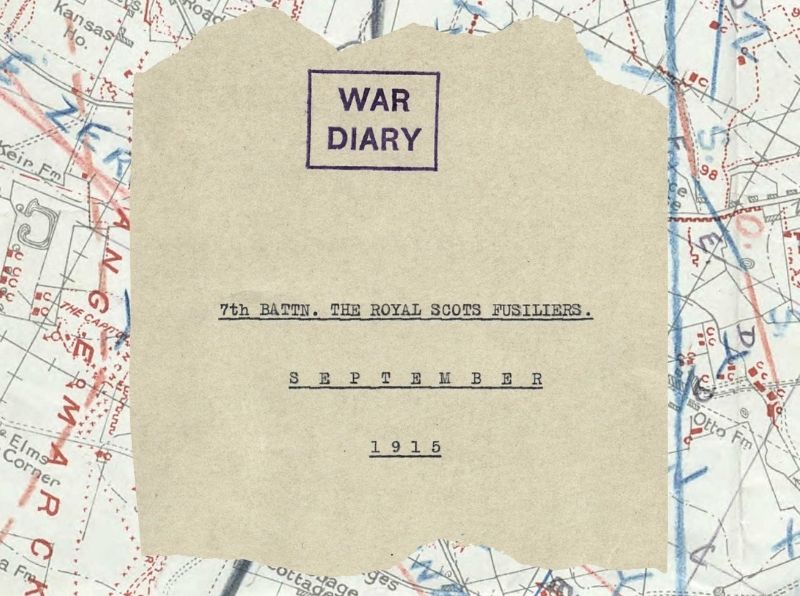Getting the best out of WWI war diaries and how they can help you research a military ancestor.
War diaries are among the most interesting and exciting records to research our British Army ancestors, revealing fascinating information that will help us better understand their service during wartime. Forces War Records members can delve into our WWI war diaries collections, covering the Western Front and the Gallipoli campaign. Curious about what a war diary is and what it can tell you about your ancestors’ service? All is revealed in this handy guide.
What are war diaries?
War diaries trace the day-to-day activities of a battalion or unit during wartime, providing us with a fascinating insight into their actions. From 1908, it was a requirement for each battalion or unit of the British Army to keep a diary, which a junior officer generally compiled, before being approved by a senior or commanding officer. Some diaries were handwritten, while others may have been typed, and they vary in detail – some officers disclosed far more than others.
From life in the trenches to large-scale offensives and battles, the diaries provide rich detail to help you understand what your ancestors were experiencing throughout their service.

What kind of WWI war diaries are available on Forces War Records?
Are WWI war diaries online? Yes, many are. Our war diaries are divided into two extensive collections:
British Army War Diaries (France, Belgium and Germany), 1914-1920
British Army War Diaries (Gallipoli-Dardanelles), 1915-1916
Why use WWI war diaries in your research
You’ve researched your WWI ancestor in service and casualty records or medal collections and POW rolls, and you have some dates and locations and who they served with. But you want to go further than this: What was their unit doing during the Battle of the Somme? What was it like for them to land on the first day of the Gallipoli Campaign? What was happening on the date they were wounded, taken prisoner or killed in action? Or, what exactly were they experiencing during those stints in the trenches? This point of your research would be a great time to explore the WWI war diaries.

Where to start with WWI war diaries
Your research may have revealed that your ancestor served with the 13th Battalion Royal Scots or the 1st Battalion Rifle Brigade during the war. Try searching the war diaries collections for “1 Battalion Rifle Brigade”, with speech marks if you like, and review your results.
What exactly can you learn about your ancestor’s wartime experience from the WWI war diaries?
We want to inspire you to explore your ancestor’s unit in the diaries and trace their journey during the war, so we’ve highlighted some typical examples to show you what kind of information you could discover.
Discover the role your ancestor’s battalion played in pivotal battles and campaigns
Perhaps your ancestor went over the top of their trenches on the opening day of the Battle of the Somme, or they landed on the beaches of Gallipoli with their comrades. You can use the WWI war diaries to learn about their battalion’s involvement in these key moments of WWI, bringing to life their role in these momentous battles.

Wounded, taken prisoner or killed in action: discover the details
Transports yourself to specific days in your ancestors’ service with the WWI war diaries. Discover the events that led them to receive a wound in action, being taken prisoner, or, sadly, being killed in action. The information provided in a war diary means these events become more than just a date on a record; you now have context and a better understanding of these pivotal moments in your ancestors’ service.

Daily life in the trenches
In between the battles and trench raids, what were our ancestors doing while serving in the trenches? Gain valuable insight into daily life in the trenches and the tasks that occupied our ancestors and their units.
FWR Tip: While a significant number of WWI war diaries are available in our collections, some diaries, such as those relating to medical services, are still held by The National Archives.
Learn about iconic moments during the war
The WWI war diaries can shed light on iconic moments of the war, like the Christmas Truce of 1914 or when the Armistice was declared in 1918.

Will my ancestor be named in the war diaries?
You’ll notice that officers are regularly named in the war diaries, ranging from postings to units or when they were wounded or killed in action. This is a bonus if your ancestor was an officer in the British Army during WWI. It is, however, very rare for other ranks to feature by name, but there are exceptions to the rule. You may get lucky, but it usually has to be for something exceptional for other ranks to feature in the main body of the diary.
Are there any exceptions to the rule?
One exception is the end of each month of the war diary, where recipients of gallantry awards are often named, both officers and other ranks.

What else can I find in the WWI war diaries?
Always scroll to the end of each month in the diaries, as you may find appendices containing a whole host of information. Sometimes, the appendices comprise detailed reports of particular actions or battles, maps outlining the trench positions on the battlefield or messages and signals.

Looking for more tips on researching a WWI military ancestor? Our blog, Researching British WWI Ancestors: Part I, will guide you through getting started, while Researching British WWI Ancestors: Part II delves deeper into the records.
Cover image: © The National Archives
Sources
Commonwealth War Graves Commission, How 21 March 1918 became the second worst day in British military history, accessed June 2024.


